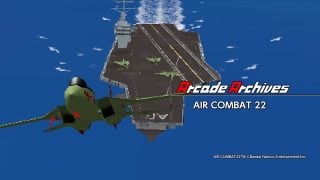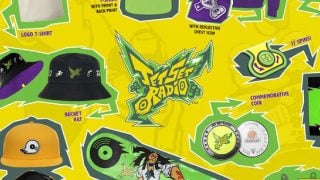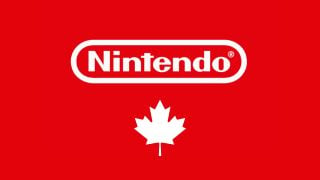With the year still being so fresh there’s something on many people’s minds: Time. Is there enough to stand by our New Year resolutions? Will the unknown future be better than the present? Could things have been done differently in the past? Questions that no one really has an answer to, and that games don’t often bother themselves with. After all, this is a medium that prioritizes entertainment and engagement of the player, through both narrative and gameplay, above all things – Giving them a sense of limitation due to time management can add unneeded stress if done poorly. Sometimes, though, games manage to make the most of time and the tension it brings, even setting it as a central pillar of the experience.
The Zelda series was no stranger to time as a concept, with its most lauded release having it right in the title. It wasn’t until a few years later that Nintendo would release a direct sequel that not only found its way into my heart, but deep under my skin. Among the ways it managed this was how it handled the omnipresence of time’s trudge toward catastrophe. Won’t you lend me a few of your own finite minutes, and let me tell you just a few of the reasons, temporal and otherwise, why I can’t get Majora’s Mask out of my head? After all, we’re all in for this terrible fate together.
Looking for a Friend
First and foremost, time was a factor in this game’s very existence in the first place. Originally intended as a remake of Ocarina of Time for the 64DD, Eiji Aonuma had his heart set on creating something new instead. The team’s pledge and dedication to have a brand new Zelda game developed in less than one year’s time mirrors Link’s own duty to a place that wasn’t his own to begin with. Having the comfort of Hyrule completely pulled out from beneath him leads our hero down a literal and figurative hole, discovering the bizarre and twisted land therein. Intentional or not, the development staff mirrored their own sudden upheaval.

As the game opens and Link rides through the Lost Woods, it eventually becomes clear what his goal was. Searching for Navi, his loyal friend and partner across his last adventure, already paints the game in a more personal light and emphasizes the importance of making relationships last as long as they can. Now fallen to the upside-down that is Termina, we learn it’s a place all about time, though it doesn’t have much to spare. Even its segmented, circular layout is equivalent to a clock face. While I’ll admit it’s easier to think of it as a compass, there’s no denying this country’s chronal considerations. Each of its four sections, as well as its central hub, deal with all of these concepts in differing ways.
Dawn of the First Day…
Clock Town is the most obvious of course, with its citizens occupied with the oncoming carnival due in three days’ time. This leads to several citizens going about their business as if nothing were wrong, hoping to be suitably prepared. The Postman’s near fanaticism with punctuality, the Curiosity Shop owner’s double life: they, and many others, are enslaved by the hours. Some, however, are fully aware of the impending calamity. Of these, none are more anxious than the likes of Kafei and Anju. These star-crossed lovers are put into disarray due to the Skull Kid’s mischief yet remain so devoted that with Link’s intervention they actually await the end of all things together.

It’s not just their plight though, as it has adverse effects on their immediate families. Considering one of their family members includes the mayor, that stress trickles down to the rest of the population. Performers wonder just what they’ll be doing in three days. Cautionary tales are told by an elder that none can stand to listen to. Outside and to the west of town a pair of sisters find their livelihood and their lives at risk, with the older’s heart already divided by separate, albeit not unrelated, going ons. It’s tragic and set to the backdrop of fantasy, but it’s also so much more tangible than a typical “heroic” quest. Your actions are felt, even if your presence in resolving these scenarios is seldom recognized once the hours wind back.
What I’m getting at is that the game presents so many situations and scenarios where your involvement wholly matters. By scheduling these events at conflicting times you have to think about what it is you’re going to do in a given cycle, again and again, as you gather more information in your Bomber’s Notebook. I remember so much of this game not because of epic set pieces or challenging bosses, but because I made a difference in characters’ personal lives. Not only does this make the game feel fulfilling, but it imparts guidance on one’s real life. Link in this game is not just a brave and resourceful hero of the land, to me he’s also a compassionate and considerate hero of the people. That’s something I, and anyone, can strive to be.
Swamp…
Traveling south to the swamplands we meet the Deku Scrubs. It bears mentioning that Link’s transformation into a Deku Scrub pretty much set the scene for why I was scared of this game when I was nine years old. The melancholy that exists on that reverse Pinocchio’s face is one of the most iconic elements of the game to me personally, and is the reason why I find the Deku interesting even after they’ve stopped appearing in more recent games. As for their society, the monarch has no patience to listen to his monkey prisoner, unwittingly putting his daughter’s life on the line. It creates a sense of obstinate disarray, making a journey through this area feel somewhat scattered and hectic even when you know exactly where to go and what to do.

Dotted around the swamp are a father bemoaning his son’s choices and a pair of sisters separated. Family is at the heart of this area, more specifically the absence of solid relationships, be they emotional or more literal. The blind actions and regret that come along with these misgivings flows like the poison plaguing the area, keeping anything substantial from growing. It’s only after reuniting the royal family that we see more healthy ties start to come together.
That said, it’s coupled with the bitter realization that the royal family’s butler’s own relationships, and the promise of future times shared with his son, aren’t quite as salvageable. It bears mentioning that handling of that element of game lore, with Link’s Deku form in some way being that poor plant man’s posterity, is one of my absolute favorites. The plot line’s understated and there for those who seek it, but a cruel reminder that even with all the planning and power available to you, you can’t save everyone once their time is up.
Mountain…
Marching north, over mountain trail and unyielding snow, family is once again a focus. However this time it’s not so much the relationships but the generational variance therein. We see a child, an adult, and an elderly individual all close to each other but unable to communicate. Though one can’t stop crying, one is dead, and the other is frozen and alone, you are able to ease their worries and remind them that even when it seems all time has stopped, perpetual winter or not, that doesn’t erase the bonds already there.

Admittedly, Snowhead is a bit sparse when compared to the rest of the game, but that sense of isolation works in its favor. With only a couple of blacksmiths and the restless Gorons around, you can start to develop cabin fever yourself. What makes the whole ordeal memorable is the interactions with Darmani. Regret and woe have been all over this game but to see a once proud warrior reduced to a stagnate phantom is heartrending. While you’ve technically already used the Song of Healing, and could have gotten some use of it in sidequests, this is most likely the first time you directly heal a character with its notes.
To receive the Goron Mask and actually become Darmani raises questions of identity. You know you’re Link, but the Gorons in the area see you as Darmani. When the mask is worn, who are you? Both, perhaps. Side quests aside again, this is a crucial moment of the game in many ways. Link isn’t just a hero, he’s the living will of a separate individual. It’s an element that reoccurs in the next section of the game and ensures that even if you pay no mind and time to the optional encounters with Termina’s citizens, you’ll at least be directly carrying the weight of four destinies by journey’s end.
Ocean…
When spring has come it’s off to the western shores. Despite being a beach, it’s hardly a vacation, instead feeling eerie and still. The first time I attempted to get through Majora’s Mask along with my brother this was as far as we were able to get, and that’s always made it and everything after somewhat more mysterious to me. Even though I know the game as well as I do now, this sense of instability and self second-guessing only adds to my appreciation of it all It’s only after pulling the dying Zora musician Mikau out of the sea, adopting his persona, that you can see all that this area has to offer, and the original N64 version of Zora swimming has always felt inherently fun to me. It’s one of the few areas where, no matter what time the in game clock displays, I like to think Link stops to enjoy himself as best he can.

New life and love is a focus of the Great Bay, both above and below the water. The core troubles of the area surround what is effectively kidnapping, with pirates having absconded with Lulu and Mikau’s eggs. Hatching them, learning the New Wave Bossa Nova, and showing it to Lulu carries a sense of tenderness yet distance. Link doesn’t love her, but she loves Mikau, who Link currently “is”. He’s given them both just a bit more time to share together, even playing the long awaited concert at the game’s end.
Canyon…
If the last section was unsettling, the eastern valley is legitimately frightening and at times just a bit disturbing. Bringing things full circle, Ikana Canyon is themed to death both as a reality and a transition. Ghosts, skeletons, corpses: all of these make Ikana their home. Often these fellows are the most lively, as the strangeness incurred by the titular Mask’s influence is what’s stirred them and they don’t exactly have much to lose. Their levity is much appreciated this late into the game, when the ravages of repeated time has certainly worn on Link.

The greatest praise I can give the area, however, is for once not focused on its atmosphere. While the area knows how to raise your anxiety, the Stone Tower Temple itself deserves the fullest praise. This is one of my favorite temples in any and all Zelda games, allowing the player to turn the entire world upside-down. This sense of scale and the surprise reaction of its first activation will always stay with me. Similarly, being able to grow to monolithic proportions at the temple’s conclusion has yet to be matched in terms of personal resonance.
To the Moon
Once all tasks are completed and the adventure is at its close, Link has to finally confront the pitiful prankster that’s becoming something much more malevolent. The Skull Kid itself is perhaps my most favorite Zelda character of all, and to see those massive orange eyes peering from beneath its hat brim is so striking to me. Having those eyes ever present on the Moon makes the entire adventure one where you feel pressured, with the clock along the bottom keeping that apparent even without seeing the Moon itself.

It’s only on the third day that you can see this stellar sphere up close and personal. Summoning the giants and heading to its interior takes an already odd game and makes it purely surreal. If you’ve collected all of the masks and end up in Majora’s game of tag, you finish not with a climactic clash, but a cathartic crushing of this nightmarish mask. The fact that it’s swiftly defeated by a power obtained not through strength but by remedying all of the it’s misdeeds is the ultimate satisfaction. With credits that show many of the characters you’ve assisted and giving nearly everyone some sort of happy ending, it brings things full circle. You have managed to make a difference, both wide scale and personal, concluding everything with a shining new day.
I can’t say if Breath of the Wild will be so spectacular as to become my new favorite, but Majora’s Mask has managed to hold that position for almost a decade now. Of course I’m excited, but more than anything I want to see what it takes from Majora’s dark adventure. Seeing as it seems to be focusing more on varied side characters and more emotional storytelling, I think I have a lot to look forward to. That said, there’s nothing stopping me from turning back the clock and visiting Termina again and again, three days at a time.
This article is part of our new Zelda look-back series running up to the release of Breath of the Wild.
Leave a Comment


